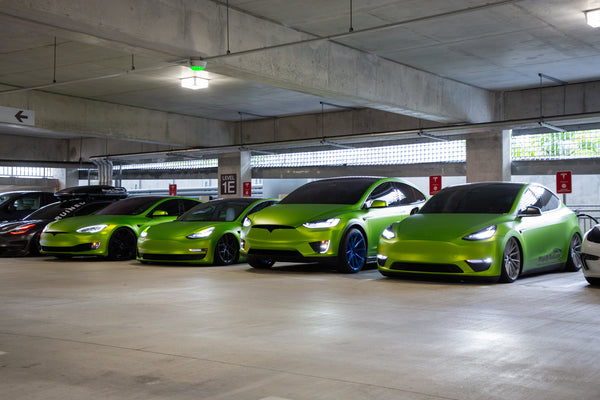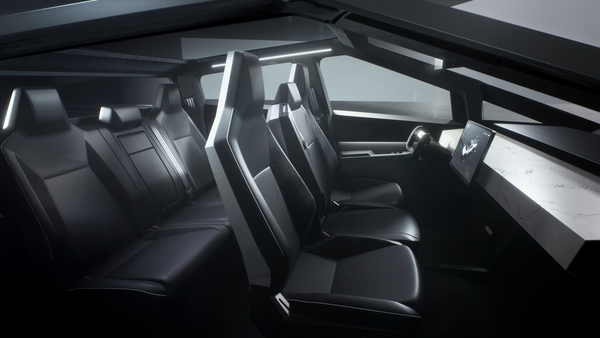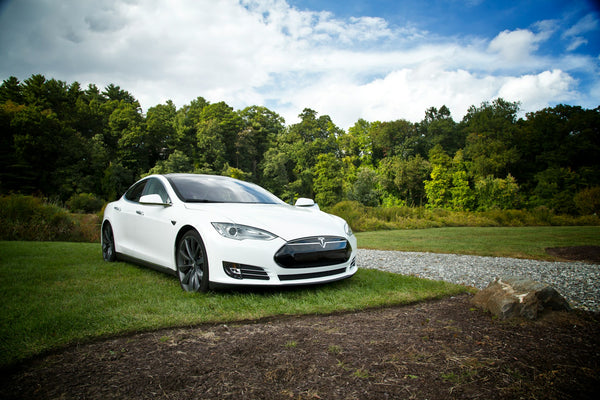Tesla Software Update 7.0 with Autopilot features is here
According to Tesla Motors*, the latest software update, 7.0 allows the Tesla Model S to use its combination of cameras, radar, ultrasonic sensors and data to automatically steer down the highway, change lanes, and adjust speed in response to traffic. Once you’ve arrived at your destination, Model S scans for a parking space and parallel parks on your command. Note: a beta version of software update 7.0 is for Tesla Model S vehicles (available for 2014 - 2015 models with autopilot hardware only) scheduled for US this week and EU next week.
Source: Car and Driver
Software update 7.0 increases the driver’s confidence behind the wheel with features to help the car avoid hazards and reduce the driver’s workload. While Model S can’t make traffic disappear, it can make it a lot easier, safer, and more pleasant to endure. Along with the new Autopilot features, the instrument cluster’s new driver-focused design shows the real-time information the car uses to intelligently determine the vehicle's behavior in that moment relative to its surroundings.
The instrument panel provides a visualization of the road as detected by the car’s sensors, giving drivers the information their car is using for features including lane departure, blind spot detection, speed assist, collision warning, adaptive cruise, and autosteer.
Autosteer (Beta)
Autosteer keeps the car in the current lane and engages Traffic-Aware Cruise Control to maintain the car’s speed. Using a variety of measures including steering angle, steering rate and speed to determine the appropriate operation Autosteer assists the driver on the road, making the driving experience easier. Tesla requires drivers to remain engaged and aware when Autosteer is enabled.
Source: Jalopnik
Auto Lane Change
Changing lanes when Autosteer is engaged is simple: engage the turn signal and Model S will move itself to the adjacent lane when it’s safe to do so.
Automatic Emergency Steering and Side Collision Warning
Side Collision Warning further enhances Model S’s active safety capabilities by sensing range and alerting drivers to objects, such as cars, that are too close to the side of Model S. When the car detects an object close to its side, fluid lines will radiate from the Model S image in the Instrument Panel to alert the driver.
Autopark
Model S can now parallel park itself, eliminating the need for drivers to worry about complex and difficult parking maneuvers. When driving at low speeds around cities, a “P” will appear on the Instrument Panel when the Tesla detects a parking spot. The Autopark guide will appear on the touchscreen along with the rear camera display, and, once activated, Autopark will begin to park itself by controlling steering and vehicle speed.
Tesla Motors CEO Elon Musk / Autopilot Press Conference
According to Wired, Tesla Motors CEO Elon Musk explained in his press conference yesterday, “We tell drivers to keep their hands on the wheel just in case, to exercise caution in the beginning. Over time, long term, you won’t have to keep your hands on the wheel—we explicitly describe this as beta. If at any point you grab the wheel, Autopilot will turn off, passing control back to you. The wheel doesn’t have capacitive touch, but it measures torque, so any tiny little movements you make against it, it feels and knows you’re there, and at least sort of responsive. But again, you only have to touch it if you want too—unless you’re in in New York, then you’re legally required to have one hand on the wheel."
===
Source: Tesla Motors




